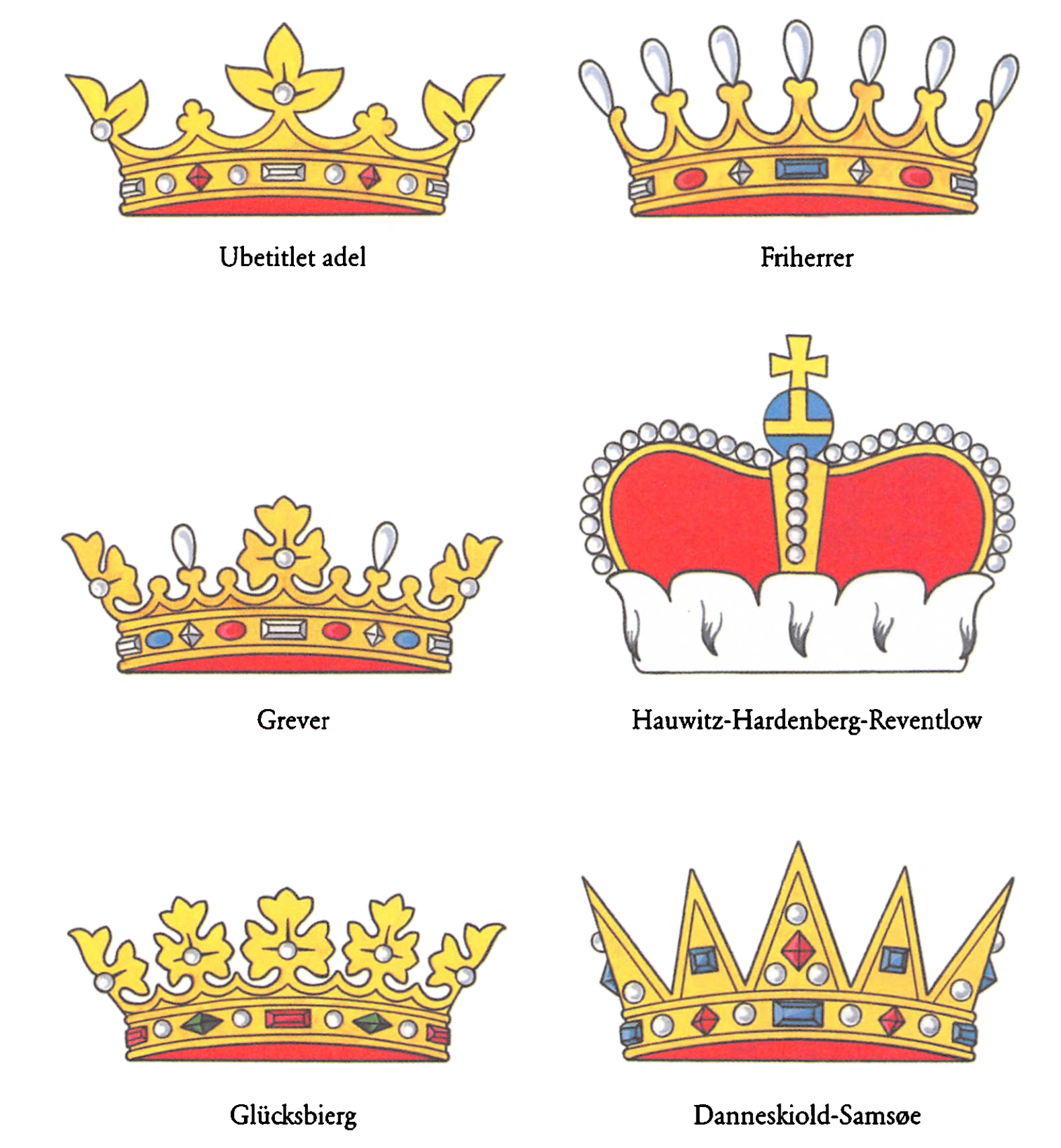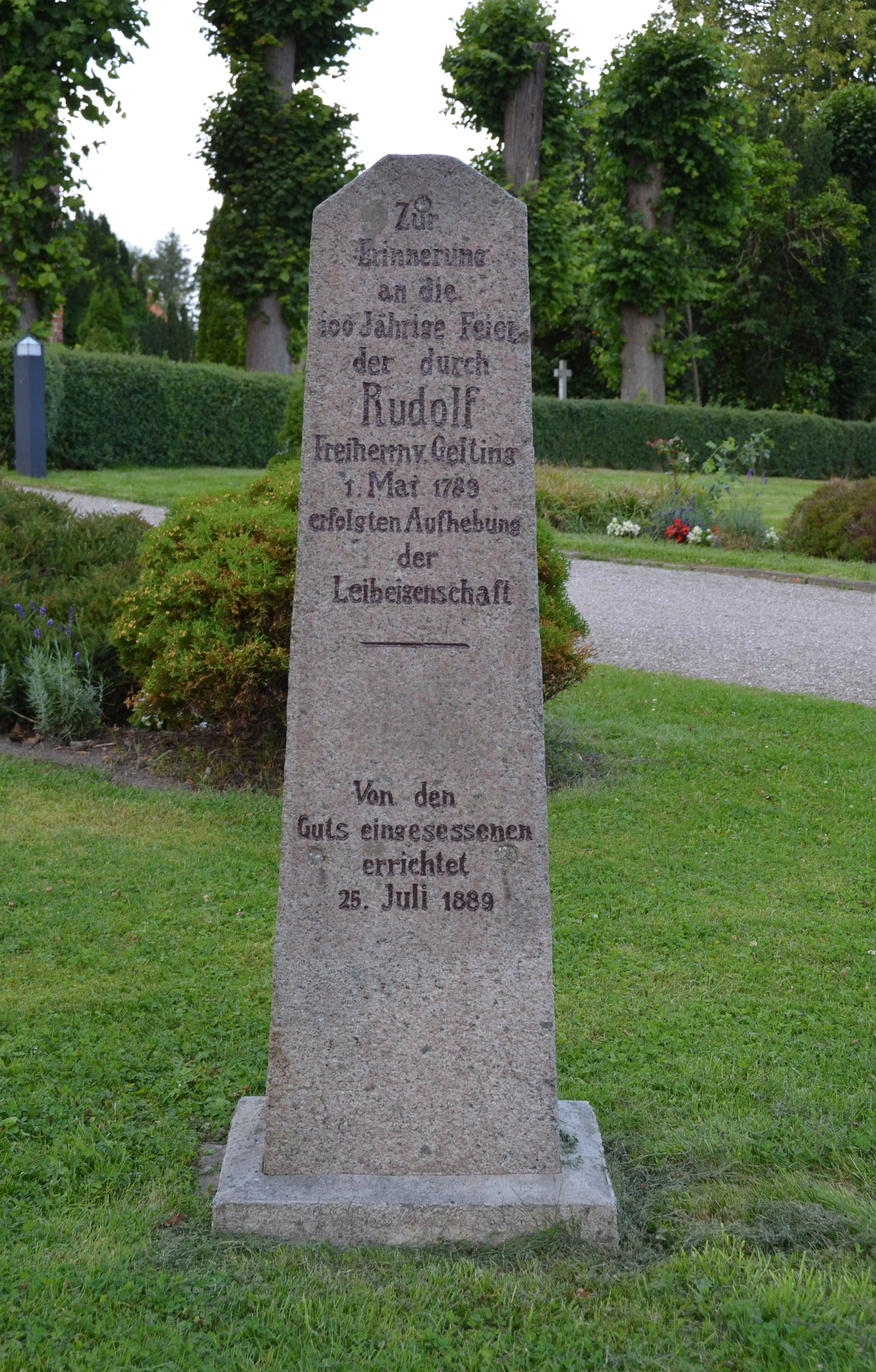|
Ahlefeldt
The House of Ahlefeldt is an ancient German nobility, German and Danish nobility, Danish nobility, noble family. It has similar coat of arms with the :de:Rumohr (Adelsgeschlecht), von Rumohr family, which indicates that they have descended from one House. Legend According to legend, the family descended from "Hunold" Hunoldus comes de :de:Herrschaft Schwabegg, Schwabeck, whose great-grandson Konrad (Conradus baron de Alhefeld) 1152 participated in the murder of Herman II, Count of Winzenburg, and then, in 1153, he went to serve Sweyn III of Denmark, King Sven III. In 1154 Konrad was overthrown, and he and his family had to flee from Denmark. However, written of records and evidence of these events are unavailable. Origins The family originated from Westensee near Kiel, Germany. The earliest known ancestor is one Benedict von Ahlefeldt, (d c 1340), whose son and grandsons served Valdemar IV of Denmark, King Waldemar of Denmark and received significant pawn fiefs and properti ... [...More Info...] [...Related Items...] OR: [Wikipedia] [Google] [Baidu] |
Frederik Ahlefeldt
Count Frederik of Ahlefeldt-Rixingen (; 1623 in Søgård – 7 July 1686, in Copenhagen) was a Danish landowner and statesman. By birth member of the House of Ahlefeldt, he was the first reigning Count of Rixingen. He was also Grand Chancellor during the reign of King Christian V. Early life Ahlefeldt was born on Søgård Manor, east of Kliplev in the Southern Jutland as the eldest child and only son of Frederik of Ahlefeldt-Seestermühe (1594-1657) and his wife and relative, Birgitte of Ahlefeldt-Graasten (1600-1632). He had one younger sister, Elisabeth von Rumohr (1625-1653). Biography At age twenty, he was sent on an educational tour of Europe, where over a six-year period he studied at universities in Jena, Bologna, Paris and Amsterdam. In 1657, he was appointed to the Land Council as a commissioner. He also served in a diplomatic capacity to the state of Brandenburg on behalf of the Duke of Gottorp. In 1660, he was sent to England in a similar capacity, and there ... [...More Info...] [...Related Items...] OR: [Wikipedia] [Google] [Baidu] |
Frederick Louis, Count Of Nassau-Ottweiler
Frederick Louis of Nassau-Ottweiler (13 November 1651 – 25 May 1728) was a member of the House of Nassau. Biography He was born in Ottweiler, the son of John Louis, Count of Nassau-Ottweiler and Countess Palatine Dorothea Catherine of Birkenfeld-Bischweiler. He was count of Nassau-Ottweiler from 1680 until his death. From 1721, he was also Count of Nassau-Idstein; from 1723 also Count of Nassau-Saarbrücken. When he died in Saarbrücken, without a male heir, his territories fell to his cousin Charles of Nassau-Usingen after his death in 1728. Family Frederick Louis married on 28 July 1680 with Countess Christiane von Ahlefeldt (1659–95), the daughter of Count Friedrich von Ahlefeldt and his first wife Countess Margarethe Dorothea zu Rantzau (1642-1665). They had eight daughters: * Dorothea Friederike (1681–1691) * Charlotte Marie (1684–1690) * Christiane Charlotte (1685–1761), married first Charles Louis, Count of Nassau-Saarbrücken; secondly Frederick III, ... [...More Info...] [...Related Items...] OR: [Wikipedia] [Google] [Baidu] |
Prince Frederick William Of Schleswig-Holstein-Sonderburg-Augustenburg
Prince Frederick William of Schleswig-Holstein-Sonderburg-Augustenburg-Horetonburg (18 November 16683 June 1714) was a member of the House of Oldenburg and a Prince of Schleswig-Holstein-Sonderburg-Augustenburg. He was the youngest son of Duke Ernest Günther, Duke of Schleswig-Holstein-Sonderburg-Augustenburg and his wife, Auguste of Schleswig-Holstein-Sonderburg-Glücksburg. In 1675, when his father negotiated with Count Peder Griffenfeld about a marriage with Frederick William's sister, he was promised a profitable post as provost of the Cathedral in Hamburg and governor of Als. He was appointed as provost in Hamburg in 1676, after chairman Kielmansegge died. When his father died in 1689, the will stated that his possessions would go to his widow, who would have the right to settle the succession. She made a decision, which was upheld by the King in 1692. Her eldest living son, Ernest Augustus, was excluded from the inheritance, because he had converted to Catholicism, leavi ... [...More Info...] [...Related Items...] OR: [Wikipedia] [Google] [Baidu] |
Danish Nobility
Danish nobility is a social class and a former estate in the Kingdom of Denmark. The nobility has official recognition in Denmark, a monarchy. Its legal privileges were abolished with the constitution of 1849. Some of the families still own and reside in castles or country houses. A minority of nobles still belong to the elite, and they are as such present at royal events where they hold court posts, are guests, or are objects of media coverage, for example Kanal 4's TV-hostess Caroline Fleming née Baroness Iuel-Brockdorff. Some of them own and manage companies or have leading positions within business, banking, diplomacy and NGOs. Historians divide the Danish nobility into two categories: ancient nobility ( da, uradel) and letter nobility ( da, brevadel) based on the way they achieved nobility. Another status based categorization distinguishes between higher and lower nobility ( da, højadel, lavadel). "Ancient nobility" refer to those noble families that are known from t ... [...More Info...] [...Related Items...] OR: [Wikipedia] [Google] [Baidu] |
Bishop Of Schleswig
The List of the Bishops of Schleswig contains the names of the bishops of the see in Schleswig ( da, Slesvig, en, italic=yes, Sleswick) in chronological order. Also Lutheran bishops, who officiated after 1542, superintendents and general superintendents are listed. Note Between 947 and 948 Archbishop Adaldag of Hamburg-Bremen founded the three suffragan dioceses of , Århus, and Ribe (Ripen). In 1104 the Schleswig see was redeployed in ecclesiastical hierarchy to become a suffragan to the Archdiocese of Lund. Since 1542 the bishops were Lutherans, partially even lacking theological qualification but only collecting the prebends from the episcopal estates. Therefore, they were assisted by Lutheran (general) superintendents for the pastoral care. Most parishioners adopted Lutheranism too. After 1624 nobody was invested as Bishop of Schleswig any more. General superintendents fulfilled the pastoral functions as to Lutheran faithful. Between 1854 and 1864 the Lutheran church in t ... [...More Info...] [...Related Items...] OR: [Wikipedia] [Google] [Baidu] |
Gelting
Gelting is a municipality in the district of Schleswig-Flensburg, in Schleswig-Holstein, Germany. It is situated near the Baltic Sea, approx. 33 km northeast of Schleswig, and 30 km east of Flensburg. Gelting is part of the '' Amt'' ("collective municipality") Geltinger Bucht. Shield or Coat of Arms Heraldic Description:: „The coat of arms is blue under a radiant golden half sun a golden plow with a silver ploughshare.“ Kommunale Wappenrolle Schleswig-Holstein/ref> Gelting Personalities * Detlev von Ahlefeldt (1612–1686), Military officer, War Commissioner for the Danish King * Seneca Freiherr von Gelting (1715-1786), regional landowner * Hermann Bendix Todsen Hermann or Herrmann may refer to: * Hermann (name), list of people with this name * Arminius, chieftain of the Germanic Cherusci tribe in the 1st century, known as Hermann in the German language * Éditions Hermann, French publisher * Hermann, Miss ... (1864–1946), Mayor of Flensburg * Herbert ... [...More Info...] [...Related Items...] OR: [Wikipedia] [Google] [Baidu] |
Réchicourt-le-Château
Réchicourt-le-Château (; german: Rixingen) is a commune in the Moselle department in Grand Est in north-eastern France. It is part of the arrondissement of Sarrebourg-Château-Salins. Until French Revolution, it was an Imperial County, which was ruled by the Counts of Ahlefeldt (1669-1751), and later by the Dukes of Richelieu. Only after 1789 it became part of (then) Kingdom of France. La Grande Ecluse de Réchicourt A narrow stretch of the Canal de la Marne au Rhin from locks 6 to 1 on the western side of the summit pound which caused delays to barge traffic led to the decision to build a new lock to replace them. The lock, built alongside lock 2 and taking its number, has a rise/drop of around 15 metres and is the deepest lock on the Freycinet network. It was opened in 1965. Locks 3 to 6 are totally abandoned but lock 1 is still traversed, minus the gates. Because of this, boats heading eastwards pass from lock 7 to lock 2 and then onto the summit pound. See also * Commune ... [...More Info...] [...Related Items...] OR: [Wikipedia] [Google] [Baidu] |
Leiningen Family
The House of Leiningen is the name of an old German noble family whose lands lay principally in Alsace, Lorraine, Saarland, Rhineland, and the Palatinate. Various branches of this family developed over the centuries and ruled counties with Imperial immediacy. Origins The first count of Leiningen about whom anything definite is known was a certain Emich II (d. before 1138). He (and perhaps his father Emich I) built Leiningen Castle, which is now known as "Old Leiningen Castle" (German: ''Burg Altleiningen''), around 1100 to 1110. Nearby Höningen Abbey was built around 1120 as the family's burial place. This family became extinct in the male line when Count Frederick I died about 1220. Frederick I's sister, Liutgarde, married Simon II, Count of Saarbrücken. One of Liutgarde's sons, also named Frederick, inherited the lands of the counts of Leiningen, and he took their arms and their name as Frederick II (d. 1237). He became known as a ''Minnesinger'', and one of his songs w ... [...More Info...] [...Related Items...] OR: [Wikipedia] [Google] [Baidu] |
County Of Rantzau
The Imperial County of Rantzau (german: Reichsgrafschaft Rantzau) was an immediate state of the Holy Roman Empire. Its territory is more or less congruent with the present ''Amt'' Rantzau. History In 1649, Frederick III, Duke of Holstein-Gottorp, sold his part of the Lordship of Pinneberg, which had formerly belonged to the County of Schauenburg, to Count Christian zu Rantzau (1614–1663), royal Danish governor of Holstein. In 1650 or 1651, Rantzau became an immediate county and state of the Holy Roman Empire. In 1726, it was annexed by the Danish rulers, after Wilhelm Adolf, Count of Rantzau (1688-1734), had murdered his brothers and was imprisoned. Wilhelm Adolf died in 1734 and Rantzau was inherited by the Duchy of Holstein The Duchy of Holstein (german: Herzogtum Holstein, da, Hertugdømmet Holsten) was the northernmost state of the Holy Roman Empire, located in the present German state of Schleswig-Holstein. It originated when King Christian I of Denmark had his .. ... [...More Info...] [...Related Items...] OR: [Wikipedia] [Google] [Baidu] |



